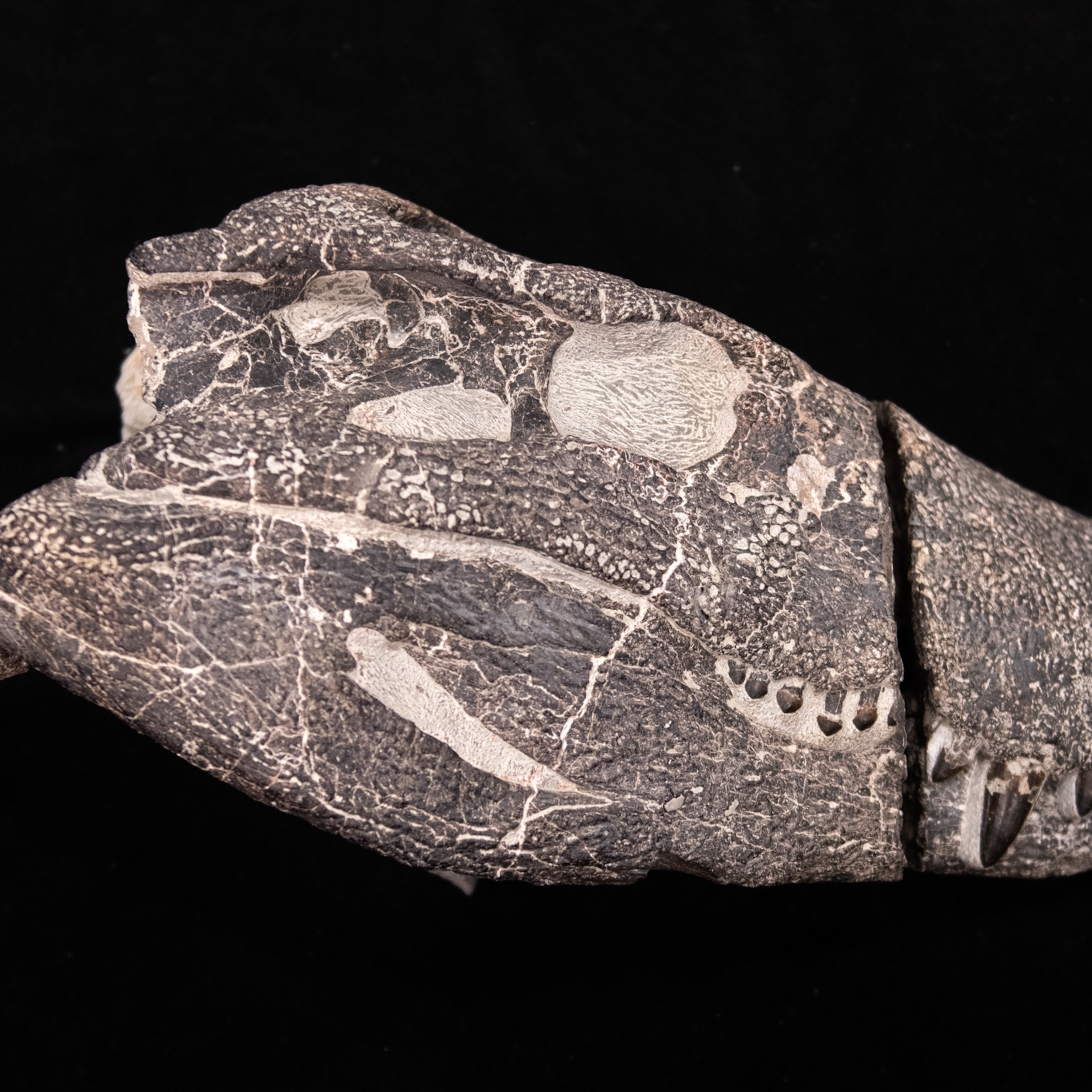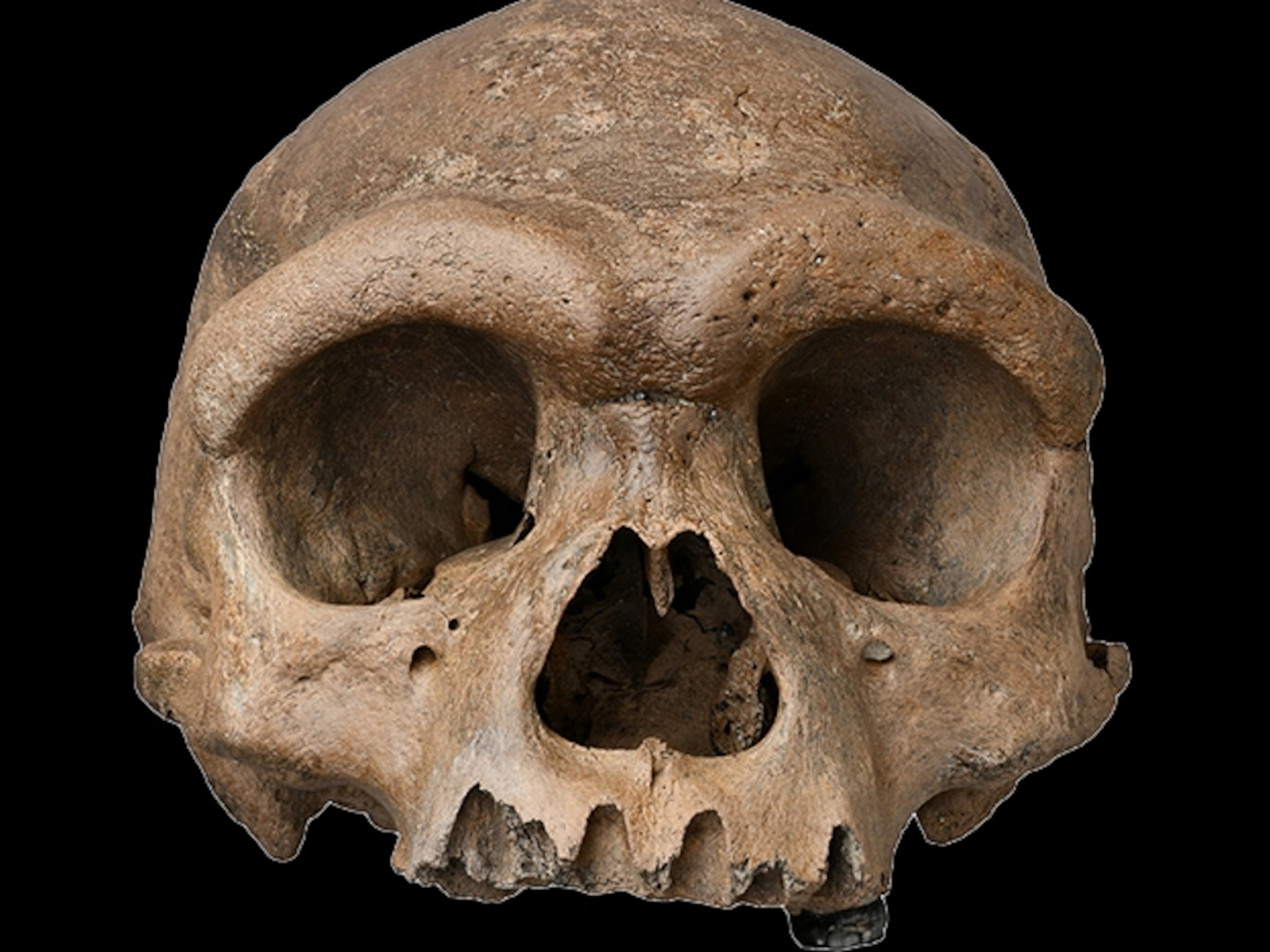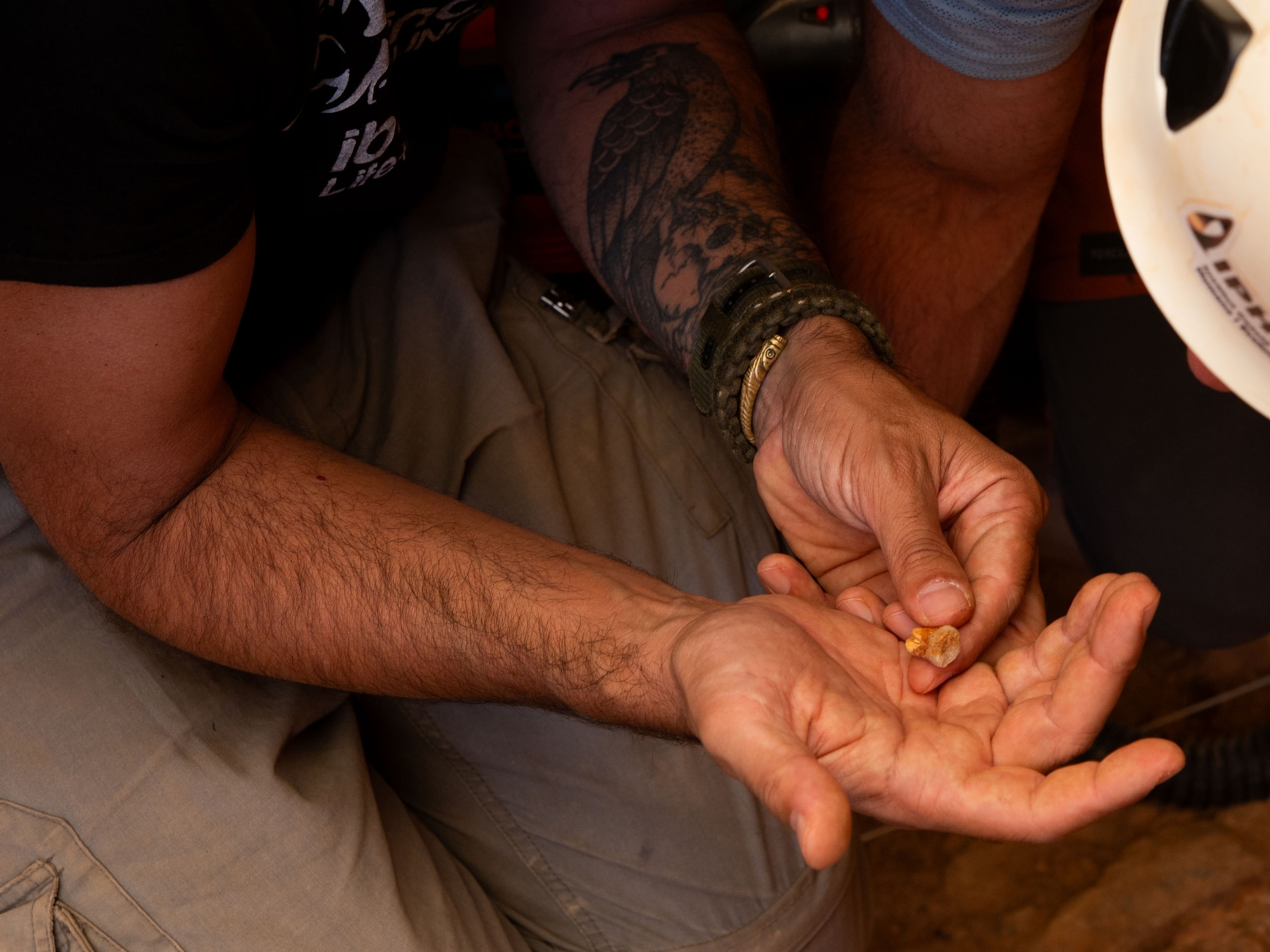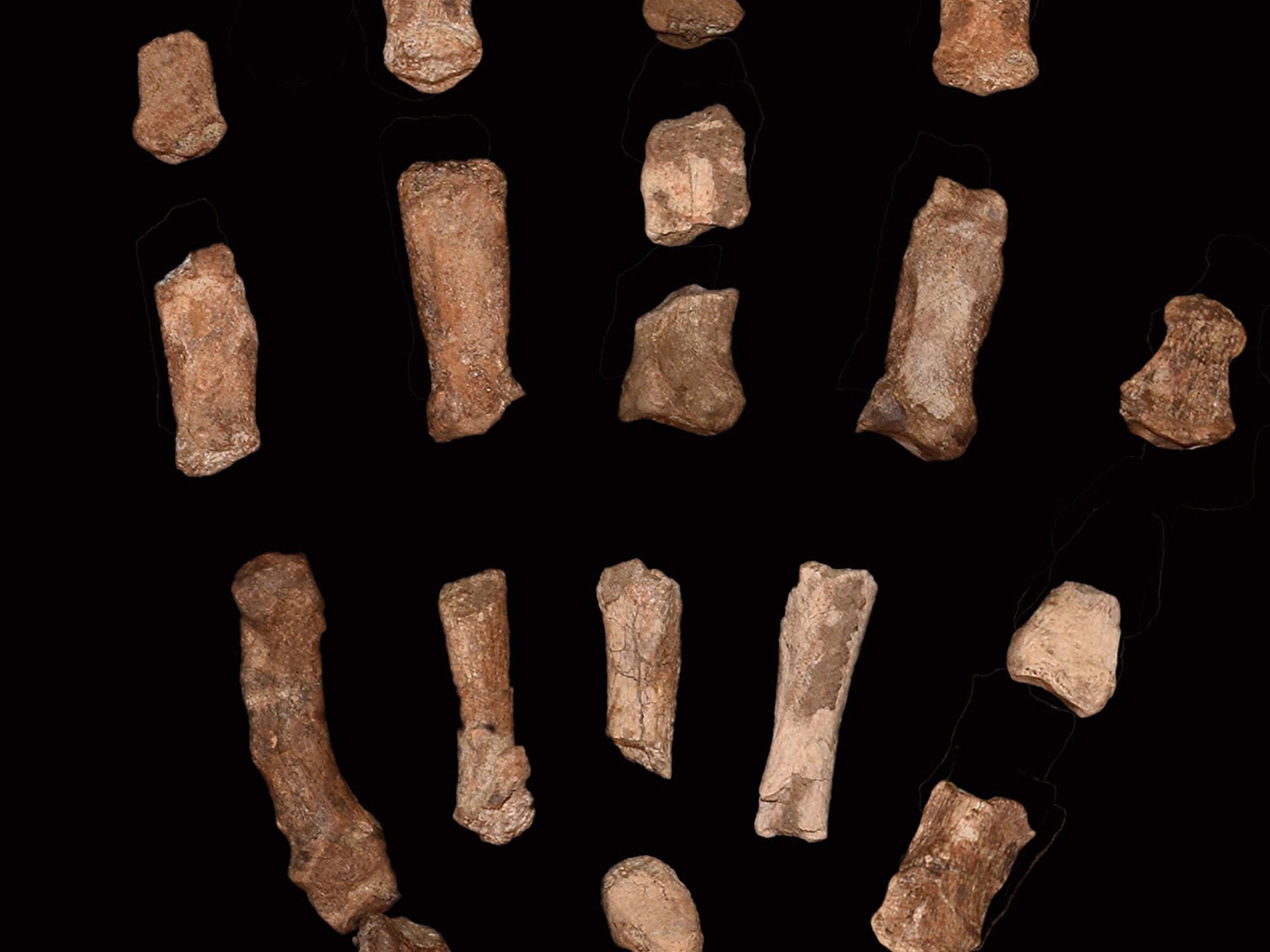Wanted: Fit, Fearless Scientist for Huge Underground Find
Recruited through Facebook, pocket-sized caver makes an outsized contribution to human fossil find.
When Becca Peixotto was facing an exciting new anthropology gig, she did what any right-thinking applicant would do: She crawled under her bed. Her Ikea bed, to be precise.
It wasn't fear. In fact, even considerable probing fails to detect any trace of fear in the 40-year-old Peixotto, despite her experience with such terror-inducing activities as hanging from cliffs, spending 22 days backpacking with a group of teenagers, and being interrogated on nationwide TV. She wasn't under the bed because she was scared. She was practicing.
Peixotto had answered a Facebook notice from Lee Berger, a paleoanthropologist at the University of the Witwatersrand in Johannesburg, South Africa, who was looking for people with excellent excavation skills who were also small and "willing to work in close quarters." Berger chose her to become one of his six "underground astronauts," who in 2013 and 2014 brought to the surface more than 1,500 fossils of a hominin, or member of the human family, from a chamber in a cave system called Rising Star near Johannesburg. The find, which includes parts of at least 15 individuals, led last week to the naming of a new member of the genus Homo called Homo naledi.
Peixotto learned that getting to the cavern where the bones had been discovered would require squeezing through an eight-inch wide choke point. Before traveling to South Africa, she says, "I ran around the house with a tape measure." She found that the space between her bed's bottom rail and the floor was about right. "I spent a lot of time hanging out under the bed." With practice, she learned to make more room for herself by deflating her lungs.
In addition to her small size (she's four feet ten inches— "the same size as H. naledi," she points out), Peixotto's qualifications for the job included a stint as an Outward Bound wilderness guide and previous archaeological excavation under unpleasant conditions. Her field work in the Great Dismal Swamp, researching how escaped slaves, called Maroons, banded together and created communities in remote areas, meant "ticks, bugs, wading through water—you have to be able to handle that and still do delicate work."
During the excavation in 2013, the closest she came to claustrophobia—and it wasn't that close—was caused by noise, not the space. If people spoke loudly, it filled the cave with sound. "We got used to talking in library voices," she said. When new people came in, they sometimes were cautioned, Inside voices, please.
Inside the cavern, space was so tight that researchers often worked with their heads almost touching. They were connected to the surface by a camera and a phone that could call in, but not out; they devised visual signals to get those above to call—including waving a laminated picture of Berger at the camera. (Berger is also a National Geographic explorer-in-residence.)
The whole team was obsessive about safety measures, which included helmets and hardware that would stop the safety ropes from unspooling downward. "There is real fall potential in Rising Star," Peixotto says, and everyone was aware that "even a small injury in a cave can be very dangerous." She wasn't scared, she says, but she was uncomfortable. The air monitor "regularly read 98 percent humidity." Sharp edges on the rocks were also a problem. Some of her team members showed off bruises and cuts in a video posted on the Rising Star expedition blog.
At first the team—the six main cavers were all women—did short shifts, passing through the narrow passage four to six times a day. Team members on the surface passed down sandwiches and snacks. One time they managed to carry in a whole bowl of tuna salad. "Tuna fish is not what you want in a cave," Peixotto says, noting its heady aroma. The bowl came in handy later, though. Cleaned out, it was just the right size to carry a skull to the surface. Eventually, tours stretched to six hours, meaning some team members found strategic uses for plastic bottles. "You don't want to have to go through the Superman crawl with a full bladder," Peixotto says, referring to a particularly tight stretch in the passage leading to the chamber that requires a one-arm-ahead crawl technique.
She loved the teamwork and the chance to be one of the first to touch an early ancestor. (She gives an audible gasp during a television interview when she recalls first holding the skull.) She also recalls jumping at the chance to work with Berger, who led the project. She knew he had a controversial background; his work had been criticized by other archaeologists who cited errors, most notably identifying fossils found on an island in Palau in southeast Asia as a population of hobbit-like people. (They turned out to be within the range of normal modern human variation.)

"I knew about it, but it didn't bother me," Peixotto says. "He's a renowned paleoanthropologist at a leading institution. He built a coalition of people from all over the world to look at these fossils."
Besides, she says, she expects that the open-access approach to exploration championed by Berger will increase scientific transparency. For instance, high-quality three-dimensional scans of the H. naledi bones can be downloaded, and anyone can print out a 3-D copy to study.
"Casts are expensive and hard to make," she says, pointing to a case filled with casts of skulls in a workroom at American University, where she studies. With open sourcing, she says, "you can make your own skull on your MakerBot," referring to a popular type of 3-D printer. "That's going to make paleoanthropology more accessible."
Since the find was made public, Peixotto has been a bit irked at the focus on her tiny size instead of on her professional accomplishments. She has two master's degree and is finishing a Ph.D. that focuses on community building among escaped slaves. She also thinks people are making too much of the fact that all the primary cavers were women.
On second thought, she says, that last point might not be so bad after all. "If my experience gets young girls interested in doing adventurous things, then I don't have any issue with it."







